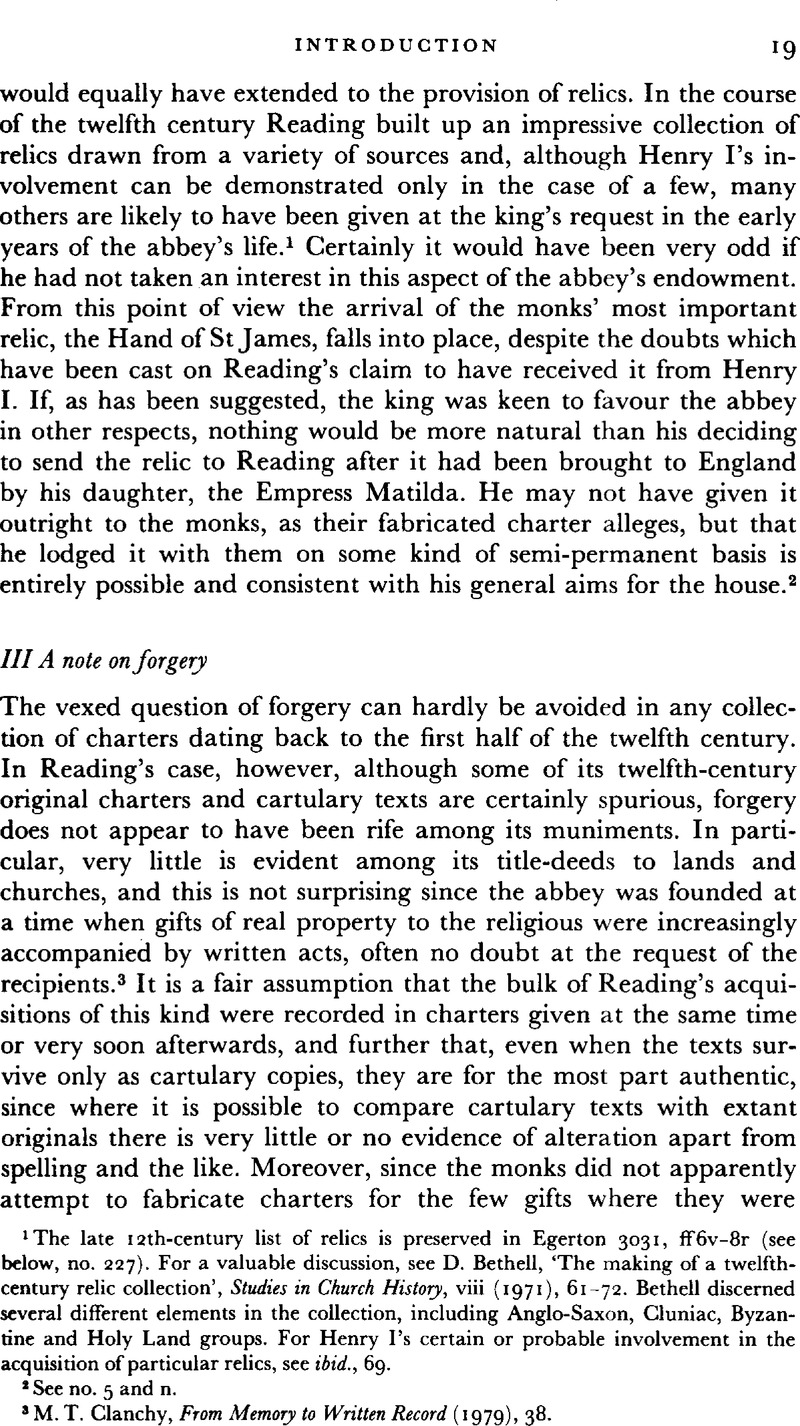No CrossRef data available.
Published online by Cambridge University Press: 21 December 2009

page 19 note 3 Clanchy, M. T., From Memory to Written Record (1979), 38.Google Scholar
page 20 note 1 Notably the Berkshire manors of Bucklebury and Pangbourne (see above, p. 16 n. 2) and property in Cambridge (see no. 8 and BL Add. Ch. 19579).
page 20 note 2 Clanchy, ibid., 253–4.
page 20 note 3 Ibid., 40–2 and pl. III. However, Dr Clanchy's statement that ‘even bishops in England did not develop organized writing offices until c. 1200’ (ibid., 40–1) must be doubtful, since Professor C. R. Cheney, whom he cites, expressly states that ‘at the beginning of the thirteenth century we cannot fail to be impressed by the regularity and distinctiveness of the documents issued by the various bishops’ (English Bishops' Chanceries 1100–1250 (Manchester, 1950), 55Google Scholar), while the editors of Gilbert Foliot's acta observe that by the time of his death in 1187 a considerable degree of uniformity of practice and direction existed among the clerks of his writing office (Foliot Letters and Charters, 23–9Google Scholar). Even so, such developments did not exclude the writing of charters by beneficiaries down to the end of the century (see below).
page 21 note 1 See nos. 203, 205.
page 21 note 2 No. 5.
page 21 note 3 see nos. 13, 17, 667.
page 21 note 4 Respectively, nos. 2 and 21.
page 22 note 1 see no. 144.
page 22 note 2 Respectively, nos. 45, 56.
page 22 note 3 E.g. Edward II and Edward III (nos. 102, 109).